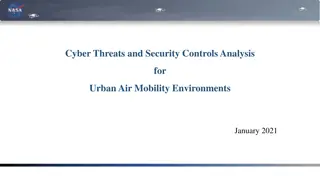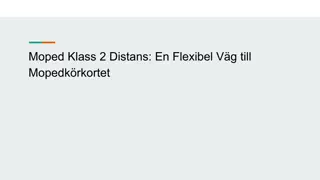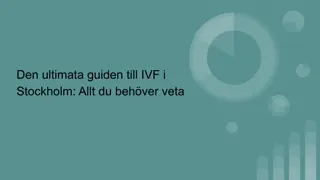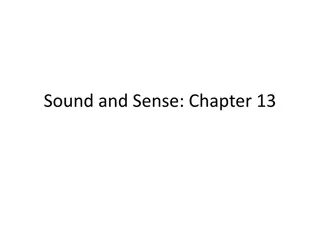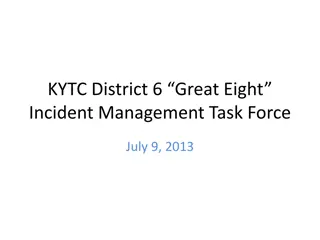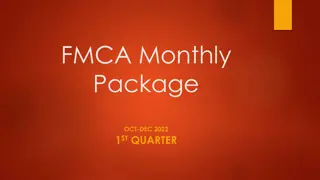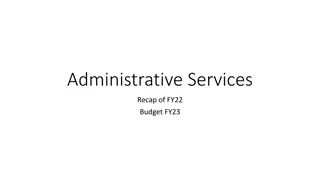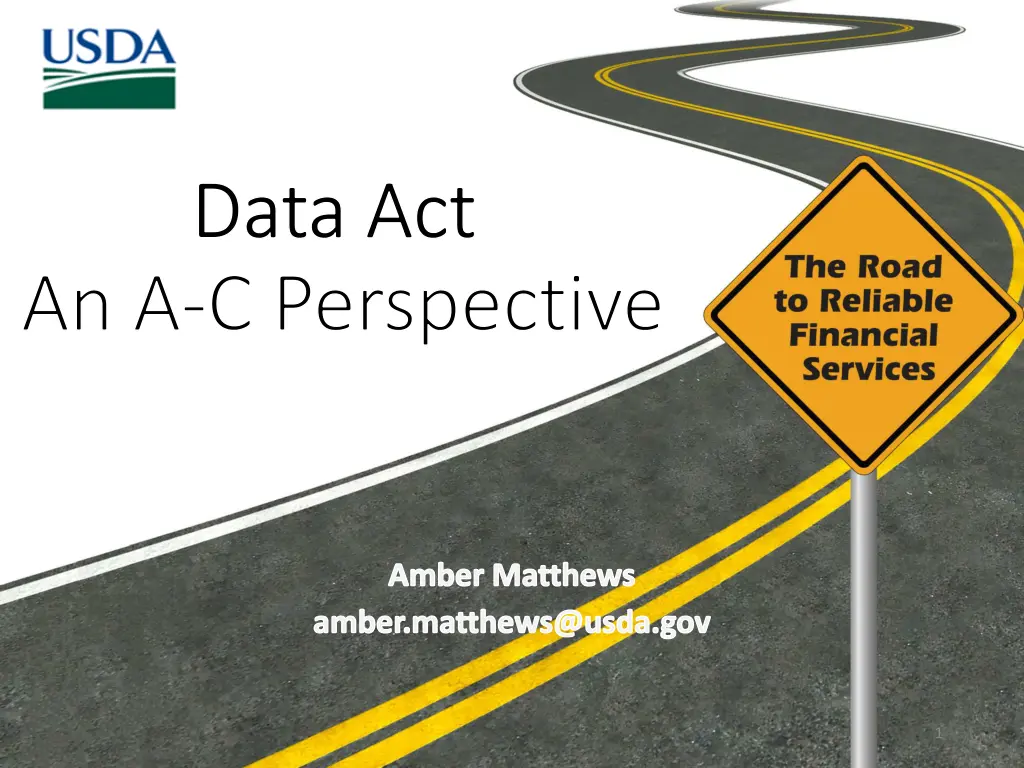
Understanding the DATA Act: A-C Perspective by Amber Matthews
Explore the Digital Accountability and Transparency Act (DATA Act) and its impact on transforming spending information into open data. Learn about the A-C Inbound process, data sources, file layouts, key fields, and Covid-19 updates affecting the reporting of emergency funds.
Download Presentation

Please find below an Image/Link to download the presentation.
The content on the website is provided AS IS for your information and personal use only. It may not be sold, licensed, or shared on other websites without obtaining consent from the author. If you encounter any issues during the download, it is possible that the publisher has removed the file from their server.
You are allowed to download the files provided on this website for personal or commercial use, subject to the condition that they are used lawfully. All files are the property of their respective owners.
The content on the website is provided AS IS for your information and personal use only. It may not be sold, licensed, or shared on other websites without obtaining consent from the author.
E N D
Presentation Transcript
Data Act Data Act An A-C Perspective Amber Matthews amber.matthews@usda.gov 1
What is Data Act & Req? The Digital Accountability and Transparency Act of 2014, or DATA Act, requires the U.S. federal government to transform its spending information into open data (datacoalition.org) On May 9, 2017, every agency in the federal executive branch began reporting spending data using the standardized data structure that Treasury and OMB had established. (datacoalition.org) This data is published to usaspending 2
What is A-C Inbound? Data that does not reside in FMMI is processed through the A-C inbound. Agencies send files to us with their file A, file B, and file C data. We use these files to produce the treasury files that will go to broker. A : Appropriations B : Object Class Program Activity C : Awards Financial 3
Where does the data come from? USDA Data from FMMI RD and FSA send their A-C Files USDA sends their SF133s FSSP Non USDA Agencies Agencies send A-C Files Agencies send SF133s All of their A-C data is received through the inbound 4
A-C File Layout FISCAL_YEAR POSTING_PERIOD SYSTEM_ID BUSINESS_AREA DEFC_CODE (CORRECTION_FLAG_INT) ALLOCATION_TRANSFER_AGENCY_ID AGENCY_ID AVAILABILITY_TYPE_CODE BPOA EPOA MAIN_ACCOUNT_CODE SUB_ACCOUNT_CODE BEA_CATEGORY AUTHORITY_TYPE_CODE PROGRAM_ACTIVITY_NAME PROGRAM_ACTIVITY_CODE OBJECT_CLASS BY_DIRECT_REIMBURSABLE_FUNDING _SOURCE PIID PARENT_AWARD_ID FAIN URI SGL_ACCOUNT AMOUNT 5
Covid-19 Updates Due to Covid19, we have been asked to make urgent changes to the Data Act process. This includes accommodating DEFC codes for reporting emergency funds. Due to the urgency of this request, we have repurposed the correction late indicator field to serve as the input for DEFC code. 6
Key Fields Fiscal_Year Posting_Period System_ID Business_Area Allocation_Transfer_Agenc y_ID Agency_ID Availability_Type_Code BPOA EPOA Main_Account_Code Sub_Account_Code Program_Activity_Code Object_Class", Direct_Reimbursable_Indic ator PIID Fain URI SGL_Account DEFC_Code 7
Common Problems MT BUSINESS_AREA AGENCY_ID MAIN_ACCOUNT_CODE PROGRAM_ACTIVITY_NAME PROGRAM_ACTIVITY_CODE 8
Additional Concerns With the addition of DEFC Code the requirements are now to have the default value Q in DEFC field or it will pick up as an error. Error 9000: Blank DEFC code Error 4080: Invalid DEFC Code 9
Afterwards After A-C files and SF133s are processed, we then start the refresh. Once the refresh is completed, we send Error and Certification reports so agencies can look at their data and resubmit. 11
Resources https://www.datacoalition.org/policy- issues/government-spending/data-act/ 12


